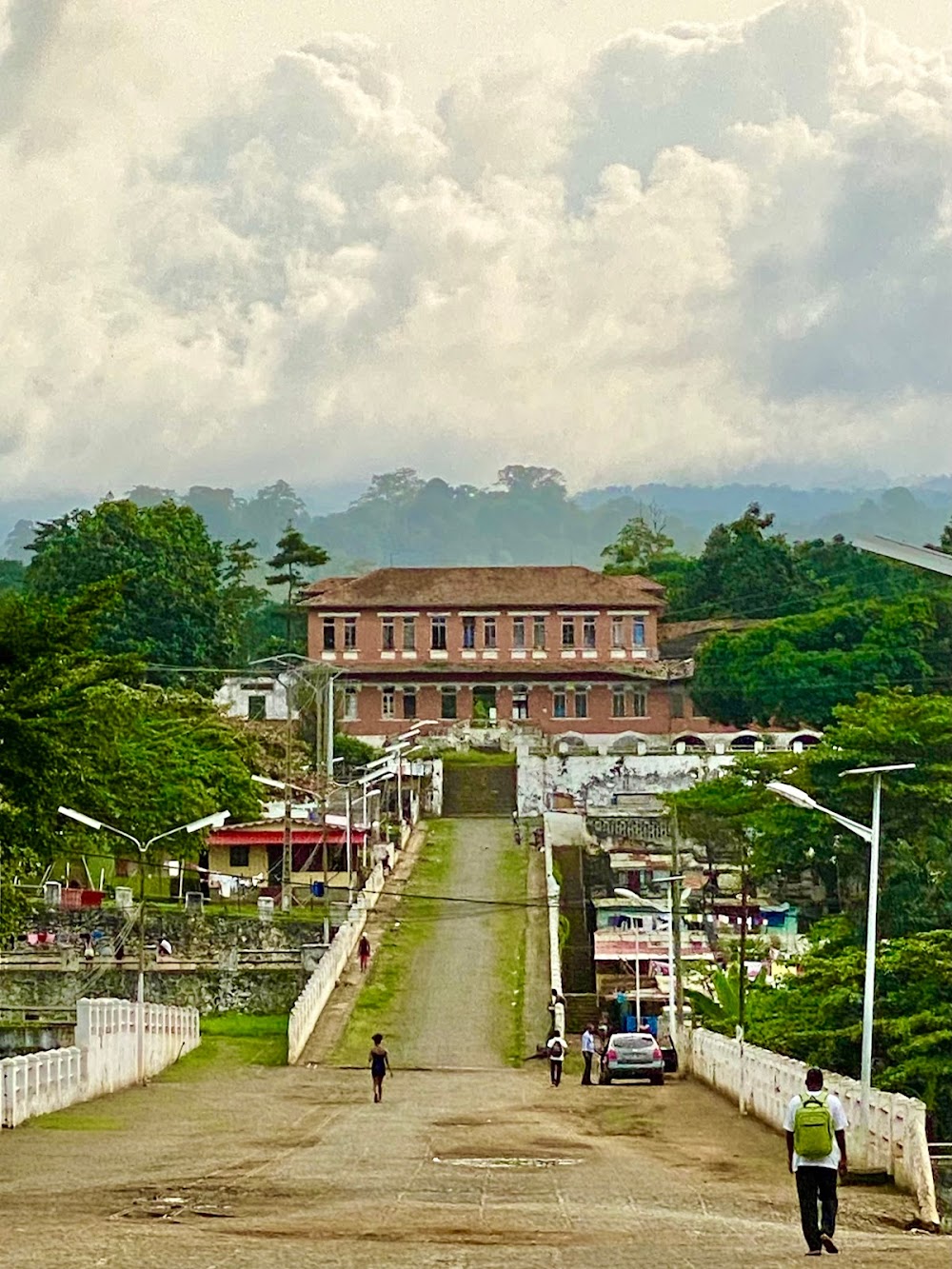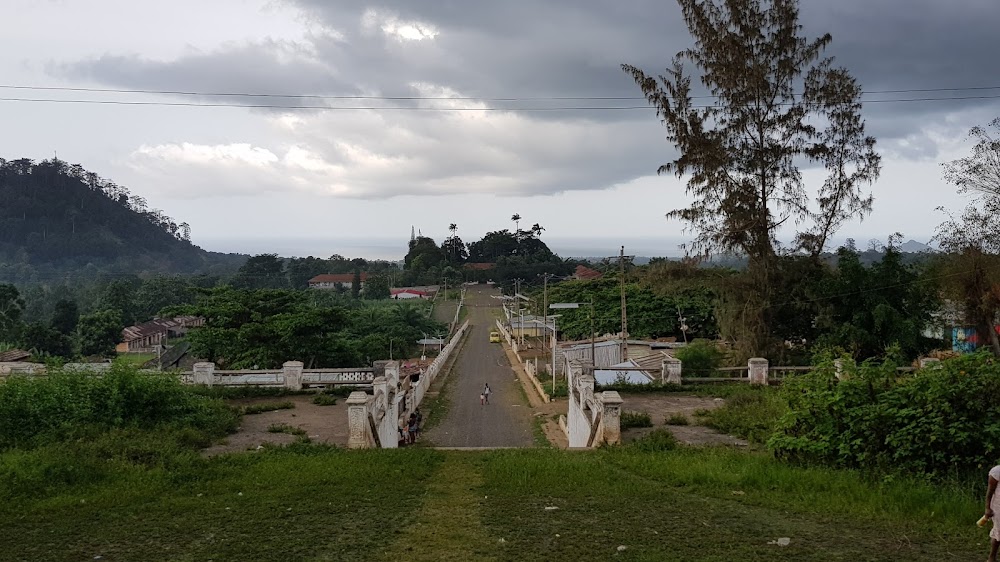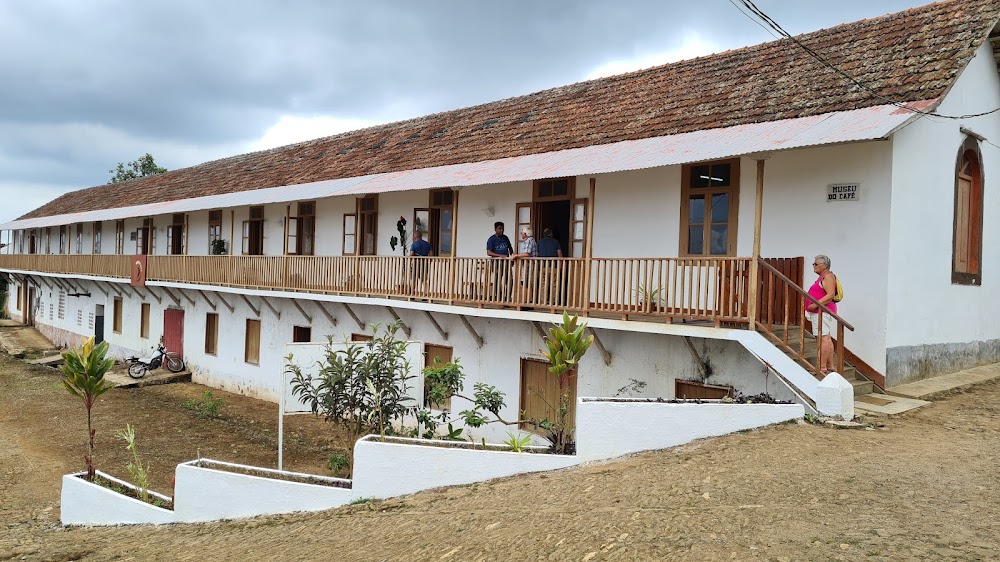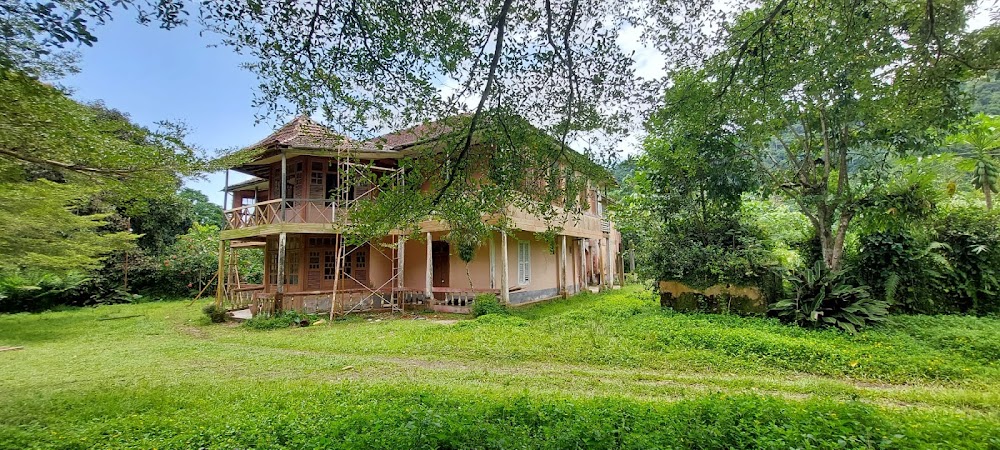Roça Agostinho Neto (Roça Agostinho Neto)
Related Places
Overview
Discovering Roça Agostinho Neto
Nestled in the quaint town of Serravalle on São Tomé Island, Roça Agostinho Neto is a captivating historic plantation that offers a glimpse into the rich tapestry of São Tomé and Príncipe’s past. This plantation, often referred to locally as Roça Agostinho Neto, has roots dating back to the late 19th century when the islands were a Portuguese colony. As cocoa and coffee emerged as vital economic drivers, Roça Agostinho Neto became one of the most productive plantations, thanks to the island's fertile volcanic soil and tropical climate.
A Tribute to a Revolutionary Leader
The plantation is named in honor of Agostinho Neto, the first President of Angola, recognizing his significant role in the African liberation movement. Originally sprawling across vast acres, Roça Agostinho Neto was not just a farming site; it also housed residential quarters for workers, administrative buildings, a hospital, and even a chapel, all critical to the plantation's operation and the well-being of its community.
Architectural Significance
At the heart of the plantation stands the main house, an impressive example of Portuguese colonial architecture. Its grand design, featuring high ceilings and intricate woodwork, starkly contrasts with the simpler dwellings of the plantation workers, which were typically constructed from wood and corrugated metal. This juxtaposition illustrates the disparities in living conditions between the plantation owner and the laborers who worked tirelessly in the fields.
A Community in Action
Agricultural life at Roça Agostinho Neto was characterized by a blend of manual labor and basic machinery. Workers harvested cocoa and coffee beans, which were processed on-site through drying and fermenting facilities that ensured the quality demanded by international markets. This labor-intensive process relied on a substantial workforce, comprised of both local inhabitants and contracted laborers from various African regions.
Transitioning to a Historic Landmark
Over the years, Roça Agostinho Neto evolved into more than just a plantation; it became a self-sustained community. While basic medical care and education were provided, they often fell short of modern standards. The plantation's hospital, albeit rudimentary, played a vital role in addressing common ailments and injuries, while the chapel served as both a spiritual refuge and a communal gathering space.
Facing Modern Challenges
In recent decades, Roça Agostinho Neto has encountered significant challenges due to shifting global economic trends and the island nation's independence. Declining world cocoa prices and changes in agricultural practices led to reduced productivity, resulting in many once-bustling buildings falling into disrepair. Today, the plantation stands as a historical site, reflecting the island’s colonial past and its path toward independence.
A Cultural and Educational Resource
Despite its challenges, Roça Agostinho Neto remains a vital cultural and historical landmark. Restoration efforts have revived some structures, allowing visitors to explore the main house, worker quarters, and other buildings that vividly depict life on a large colonial plantation. The site serves as both a tourist attraction and an educational resource, offering insights into the agricultural and social heritage of São Tomé and Príncipe.
Looking Ahead
Future plans for Roça Agostinho Neto include further restoration and the potential revitalization of parts of the plantation for sustainable tourism. This initiative aims to provide economic benefits to the local community while preserving its rich history. With its blend of natural beauty, historical significance, and cultural value, Roça Agostinho Neto stands as a unique and invaluable asset to the island nation, inviting travelers to explore its storied past and vibrant legacy.







